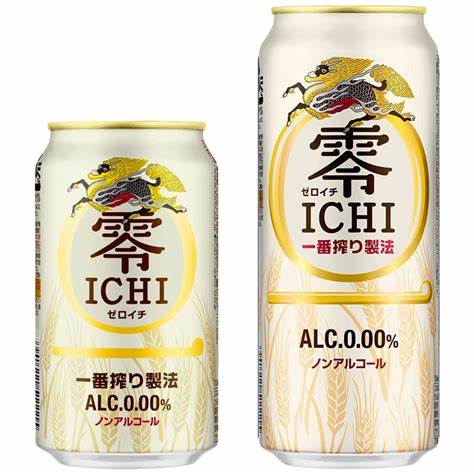Beer that is entirely alcohol-free continues to be niche. "At the moment, alcohol-free beer is still something you drink when you can't drink," says Trevor Stirling of Bernstein, a broker. Only 2.4% of beer sold globally this year will be non-alcoholic, according to Euromonitor, a research firm. Still, that is up from 1.5% a decade ago, in part because traditional beer has slipped. Much of the growth in 0.0 sales has come from places that consume lots of beer already, notably Europe.
完全不含酒精的啤酒仍然是一个有利可图的小众市场。伯恩斯坦公司的经纪人特雷弗·斯特林说:“现在,当你不能喝酒的时候,你还可以喝无酒精啤酒。”据研究公司欧睿信息咨询称,今年全球销售的啤酒中只有2.4%是无酒精啤酒。不过,这一比例仍高于10年前的1.5%,部分原因是传统啤酒的销量有所下滑。0.0无酒精啤酒销售额的增长大部分来于已经大量消费啤酒的地区,特别是欧洲。
The aim for brewers is therefore to reposition their virtuous offerings not as beer at all, but as a premium soft drink for grown-ups. That would give them a toe-hold in a business that is, by volume, nearly four times as large as beer.
因此,啤酒商的目标是重新定位他们的盈利产品,根本不是啤酒,而是为成年人打造的优质软饮料。这将使他们在一个销量几乎是啤酒四倍的业务中占有一席之地。
Indeed, many brewers believe that their booze-free products can refresh the parts of the market regular beers cannot. Bram Westenbrink of Heineken says only a fifth of its 0.0 drinkers would otherwise have plumped for a normal beer. The Dutch giant has pitched its alcohol-free brand as a suitable tipple for the office, gym and car. (It is also targeting more traditional beer-drinkers by sponsoring the European football championship now under way.)
事实上,许多啤酒酿造商相信,他们的无酒精产品可以唤醒普通啤酒无法唤醒的部分市场。喜力的布拉姆·威斯特布林克说,如果不是这样,在0.0无酒精啤酒的消费者中,只有五分之一的人会选择普通啤酒。这家荷兰巨头将其无酒精饮品的品牌定位为适宜在办公室、健身房和汽车内饮用的饮品。(它还通过赞助目前正在进行的欧洲足球锦标赛,瞄准了更传统的啤酒饮用者。)。

The beer giants also think their investments in deboozing give them an edge over upstart rivals. Craft brewers, which have thrived in recent years, work in small batches for which stripping away alcohol is uneconomical. Their hoppy flavours rely on plentiful alcohol content to satisfy drinkers, unlike the blander lagers that dominate supermarket shelves. AB InBev is aiming for at least 20% of its sales to come from no- and low-alcohol beers (typically below 3.5% alcohol by volume) by 2025, triple the current share. Heineken already has 130 0.0 products in its range.
啤酒巨头们还认为,他们在脱酒精方面的投资使他们相对于后来的竞争对手更具优势。近年来蓬勃发展的精酿啤酒商,都是小批量生产,这样脱酒精是不经济的。不像占据超市货架的淡色拉格啤酒,精酿啤酒用来满足饮酒者的美妙香气依赖于丰富的酒精含量。百威英博的目标是,到2025年,至少20%的销售额来自无酒精和低酒精啤酒(通常酒精含量低于3.5%),是目前的三倍。喜力该系列已经拥有130种0.0无酒精产品。
Governments and socially minded investors like to see beermakers offer alternatives to alcohol. Far from damaging a brand, having a 0.0 product is now a signal of a mature marque. Brewers have long tried to shift perceptions of beer as a laddish 1980s drink, fit only for football fans looking to get bladdered. Craft beers were one way to do that, but often turbocharged hangovers because of their high alcohol content. Now the industry is going the other way. How refreshing.
政府和有社会意识的投资者希望看到啤酒制造商提供酒精的替代品。现在,拥有0.0无酒精系列产品非但不会损害品牌,反而是一个成熟品牌的标志。啤酒制造商长期以来一直试图改变人们对啤酒的看法,即啤酒是一种上世纪80年代的幼稚饮品,只适合想喝个痛快的足球迷。精酿啤酒是一种方法,但由于其酒精含量高,经常会加剧宿醉。现在,这个行业正朝着另一个方向发展。真令人耳目一新。
译文由可可原创,仅供学习交流使用,未经许可请勿转载。











